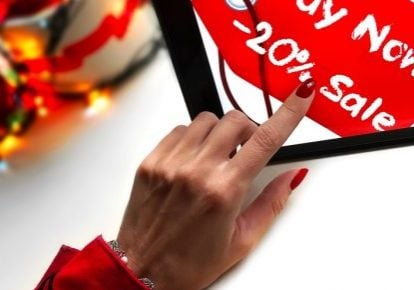
Some of your customers will always prefer their desktop for shopping, but a fast-growing number – especially the younger ones – are preferring to shop on their phones. Be ready for them with a smart m-commerce strategy. We’ll review the trending data, look at the benefits and go over some winning strategies.
Mobile-friendliness: key driver of the rapid growth in m-commerce
Historically, customers have met with frustration when shopping and paying on a small screen. Too many fields to complete, too much scrolling or worse, pinching and zooming. Too many typing errors, too hard to see, and taking too much tiime. Fortunately for the e-commerce industry, developers found ways to eliminate most of those frictions with improved mobile-responsive sites and cooperation with the payment processing industry to simplify the whole checkout process.
That re-design and simplification have enabled a staggering degree of growth in m-commerce as more e-commerce businesses have adapted their strategies to leverage that more mobile-friendly customer experience.
- Today, smartphone shopping is a major driver of e-commerce revenue. It’s growing from $128.4 billion in 2019 to an expected $418.9 billion by 2024.
- The share of m-commerce sales as a percentage of total e-commerce grew from 52.4 percent in 2016 to 72.9 percent by the end of 2020.
Source: Oberlo Statistics
Unique sales and marketing advantages with mobile
Push notifications
People aren’t always at their desks, but they almost always carry their phones. Notifications work great as a mobile strategy. Your tempting, time-sensitive offers and coupon codes can get their attention throughout the day, and often generate an immediate reaction.
One-click calling
Another unique advantage of m-commerce is the ability for a customer to reach your customer service line instantly, if they have questions or are having trouble finding what they want when they’re ready to make a purchase. One-click calling eliminates the friction of locating their phone and picking up to dial manually like they would from their desk.
In-app payments
When a customer makes an in-app payment, you can serve them up more personalized offers. They don’t require third-party payment gateways and are typically hosted by e-commerce platforms like Shopify or BigCommerce. These have their own payment processing services as well as partnerships with Apple Pay and Google Wallet for instant checkout using buyers’ stored payment information.
A faster, more convenient way to shop – especially impulse shopping
Given that phones are always with them, most people would prefer the convenience of smartphone shopping if it isn’t a pain to access. A mobile-responsive site improves the user experience when they don’t have to endlessly scroll, the text is easy to read, etc. This in turn reduces the bounce rate so that they’re more likely to stick around and convert. And, if someone has a sudden impulse to make a purchase wherever they may be in the house or out and about, their phone is right there to help them get to your friendly, mobile-responsive site.
M-Commerce and Social Commerce rising together
We’ve written before about the fast-growing social commerce sector. Social media sites Facebook, Instagram, and Pinterest have enabled access to in-app purchases, or in some cases in-app stores, where shoppers never have to leave the platform to make their purchase. TikTok has recently opened its own in-app store. And while these social sites all have desktop versions as well, the vast majority of their users are looking at them on their smartphones.
How to “mobilize” your store for m-commerce
Shopify stores come with a mobile e-commerce app that includes a shopping cart, as well as a large collection of mobile-friendly themes that unify the desktop and mobile screen appearance. BigCommerce and Prestashop also publish m-commerce themes with content options for boosting a store’s brand. As with Shopify, they automatically adjust to fit any screen, are search-friendly, and can be used with Google Analytics.
Shopgate is a robust m-commerce app that works especially well for multichannel retail operations that include both e-commerce and brick-and-mortar stores. It was designed during the Pandemic to help stores launch and manage Buy Online, Pickup In Store fulfillment operations. But there are plenty of other features it enables such as targeted push notifications, one-touch payments, and QR scanners.
For multichannel retailers, we highly recommend that any mobile strategy also include participating in Google Local Inventory Ads, which combine the power of mobile shopping with the ability to instantly discover items available right now in your local store locations, buy with one click on a smartphone while on the go, and pick up immediately for the ultimate in instant gratification.
Google LIAs, Google Ads and Buy on Google Shopping are all channels offered through Shoppingfeed. Our multichannel feed software comes with personalized service to guide e-commerce managers to the right resources for success in multichannel selling.




